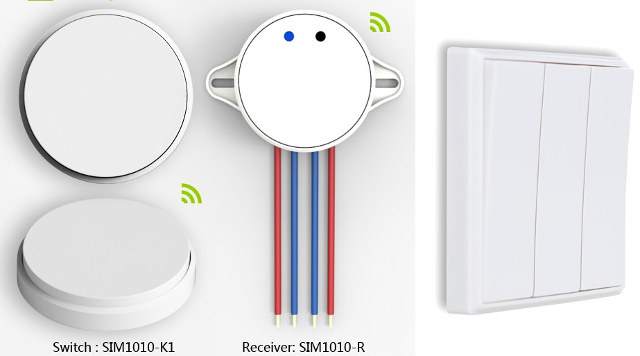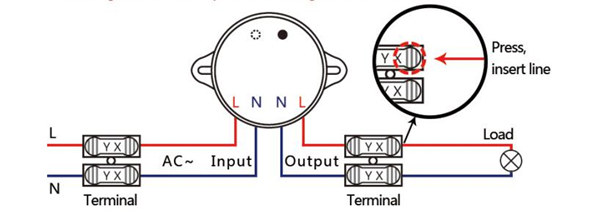SimpleLink may be the name used by Texas Instruments for their wireless MCU family, but there’s also a Chinese company called SimpleLink Technology that develops wireless smart home solutions including battery-less power switches that communicate over sub GHz band to receivers using energy harvested from pressing the button(s) on the switch.
 They have different models with 1 to 4 buttons, and round and square shapes. Let’s have a look at SIM1010-K1 specifications:
They have different models with 1 to 4 buttons, and round and square shapes. Let’s have a look at SIM1010-K1 specifications:
- Switch Type – Push-Button; operating force: 7N; typical total travel: 4mm
- Number of Keys – 1 gang
- Power Mode: Self-Powered
- Control Distance – Up to 30 meters indoor (works though walls), 100+ meters outdoor
- Frequency Bands – 433/315/868/915MHz
- Lifetime – >200,000 times
- Connectivity – SimpleLink (most probably entirely unrelated to TI SimpleLink); +10dBm Tx power
- Operating Temperature: -25~70
- Operating Humidity: 0~95%RH
- Dimensions – 70 x 15.5 mm
- Weight – 44g
That self-powered wireless switch will prevent the need to install cables between the switch and the electrical appliance or light, and communicate with SIM1010-R receiver featuring the following:
- Voltage Range – 100V-240V, 50/60Hz
- Sensitivity – -116dBm
- Controlled Power – Up to 2000W (LED MAX: 200W)
- Dimensions – 48×H25mm
- Weight – 35g

They can also provide the Simplelink self-powered module independently. The video below shows how it all works:
Since I’ve been made aware that UL/CE safely certifications might be important for this type of item, I asked the company about the receiver UL or ETL certifications to which they replied:
Because different country require different certification.We are applying CE and RoHs certification for basic use, other certification not have now.We most do OEM order, use customers’ brand, they will do the certification themselves.Also have some customers do not require certification. ( if not use in big project, to normal customers most do not concern certification )
So it looks like the product has not been independently tested for safety. It does not mean it’s not safe, it just means we don’t know.
Provided you are confident the product won’t be confiscated by the customs due to a potential SimpleLink trademark infringement, and a lack of safety certification, you can purchase a kit of comprised of a switch and receiver for $50 on Aliexpress, and they also have kits with one receiver and multiple switches. More versions can be found on SimpleLink website.

Jean-Luc started CNX Software in 2010 as a part-time endeavor, before quitting his job as a software engineering manager, and starting to write daily news, and reviews full time later in 2011.
Support CNX Software! Donate via cryptocurrencies, become a Patron on Patreon, or purchase goods on Amazon or Aliexpress




